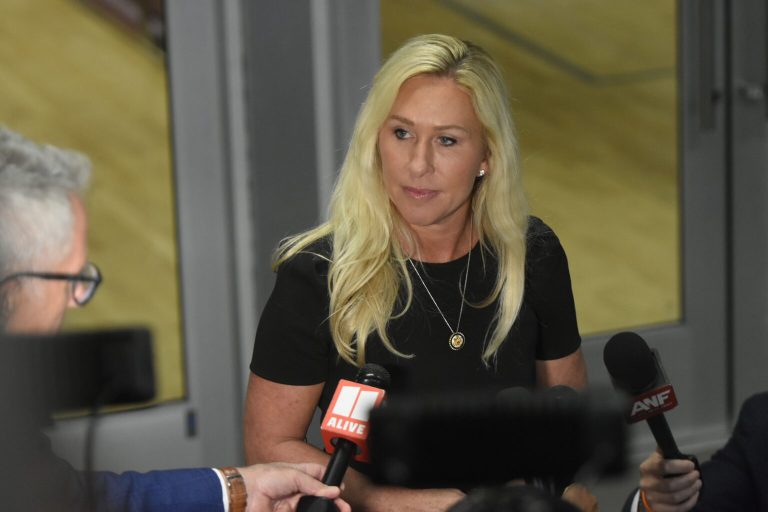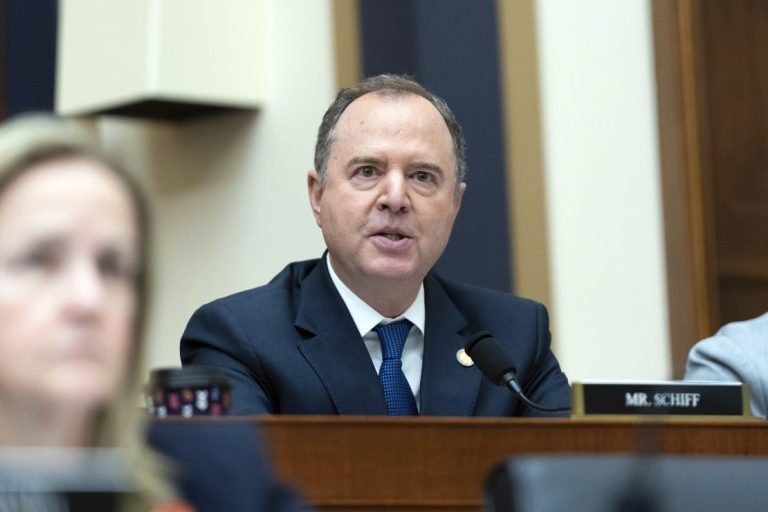The Department of Homeland Security announced this week that federal investigators arrested a man accused of offering a bounty for the murder of U.S. Border Patrol Chief Gregory Bovino. The arrest, which followed a tip from a confidential source and a digital trail of social-media messages, underscores a growing concern inside federal law enforcement: targeted threats against agents and officers conducting immigration and border operations.
According to the DHS, Homeland Security Investigations (HSI) in Chicago received information on October 3, 2025, indicating that an individual had posted offers of payment for information and violent action against Chief Bovino. Investigators traced the alleged messages to a user named “Juan” and identified the suspect as Juan Espinoza Martinez. Martinez was taken into custody on October 6 in Burr Ridge, Illinois; federal prosecutors have since charged him with soliciting the murder of a senior federal law enforcement official.
The case began when HSI received a screenshot of a Snapchat exchange appearing to show a posted bounty. The messages allegedly included a $2,000 reward for information “cuando lo agarren” — Spanish for “when they catch him” — and a $10,000 offer “if you take him down.” A third reply in the chain reportedly referenced “LK… on him,” which federal officials interpreted as a shorthand reference to the Latin Kings, a street organization frequently monitored by law enforcement. DHS officials said the screenshot and related investigative leads prompted a focused HSI probe that culminated in Martinez’s arrest.
Federal authorities described the alleged conduct as especially dangerous because it targeted a high-ranking official within the Border Patrol. Soliciting a murder of a federal official is a serious federal offense, and the Department of Justice has moved quickly to file charges. Assistant Secretary Tricia McLaughlin emphasized the gravity of the alleged plot and the message the arrest sends: criminal conspiracies aimed at government personnel will be investigated and prosecuted to the fullest extent of the law.
“Depraved individuals like Juan Espinoza Martinez — who do not value human life and threaten law enforcement — do NOT belong in this country,” McLaughlin said in a statement. “We will not allow criminal gangs to put hits on U.S. government officials and our law enforcement officers.” She added that the arrest shows federal law enforcement’s commitment to protecting officers and dismantling plots that endanger public servants.
The arrest also came amid broader warnings from DHS leadership that federal agents have increasingly become targets of organized criminal groups and extremist networks. Homeland Security Secretary Kristi Noem publicly warned that gangs, cartel members, and designated foreign terrorist organizations have been circulating bounty offers on federal officers, using social networks and encrypted channels to distribute images and reward scales that encourage kidnappings and killings. In interviews and public remarks, Noem described the threat as “unprecedented” and urged stronger protections and interagency coordination to keep agents safe in the field.
Noem cited recent violent incidents — including an episode in Chicago where federal agents reported being boxed in and attacked by vehicles — to illustrate the scale and organization behind some of these threats. She said intelligence suggested attackers were coordinated, had prior knowledge of agents’ movements, and, in some cases, had openly posted rewards or instructions to bring harm to officers. That pattern, she warned, transforms protests and criminal activity into a direct, targeted threat against federal personnel.
Law enforcement officials say the tactics behind the alleged bounties are evolving. Instead of ad-hoc threats shouted in a street confrontation, organizers now appear to be using social platforms and encrypted messaging to recruit and incentivize violent actors. Simple screenshots — like the one HSI reportedly received — can serve as a potent piece of evidence in identifying conspirators and tracing digital fingerprints back to real-world actors.
The alleged Snapchat exchange that triggered the HSI probe reportedly referenced monetary amounts tied to specific acts: a smaller sum for facilitating a capture or kidnapping and a larger sum reserved for lethal violence. That tiered structure of payment, if confirmed, indicates a calculated attempt to mobilize criminal networks against federal officials rather than random, unplanned violence.
DHS leadership framed the arrest as both a law-enforcement victory and a warning shot. Assistant Secretary McLaughlin credited collaborative investigative work for removing an immediate threat from the streets, while Secretary Noem used the moment to highlight what she described as a broader, coordinated danger to federal personnel operating in contested areas. Officials vowed to continue pursuing leads and to expand protective measures for agents believed to be at risk.
The charge against Martinez marks a significant escalation in the legal response to threats against federal officers. Solicitation of murder is a grave federal charge that can carry long prison sentences if proven. The DOJ’s swift filing signals prosecutors’ intent to treat such cases as top priorities, partly to deter copycat plots and partly to reassure federal employees that threats will be met with immediate legal consequences.
The episode also raised questions about the intersection of criminal enterprise, protest activity, and extremist organizing. DHS officials claimed that the suspects behind the bounty offers included gang members and cartel affiliates, and that some messages emanated from networks with ties to foreign-designated terror groups. If investigators can substantiate links between domestic hits and broader transnational criminal or extremist organizations, that would complicate both intelligence and prosecutorial strategies.
Civil liberties advocates and community leaders cautioned against drawing sweeping conclusions until the full case is presented in court. They underscored the importance of distinguishing between heated political rhetoric and concrete criminal conspiracies. Legal observers noted that prosecutions must be based on clear evidence that the accused took substantial steps to solicit or facilitate a killing, not merely express violent sentiments online.
Still, federal officials stressed that the line between rhetoric and crime can be crossed quickly in the digital age. A public posting that offers a cash reward tied to a violent act — coupled with identifying information and coordination among multiple parties — can constitute a clear criminal solicitation. Investigators said social media can serve as both the staging ground for recruitment and the breadcrumb trail that leads agencies to disrupt plots before violence occurs.
Local reaction in Burr Ridge and the Chicago area, where the suspect was arrested, has been muted publicly as investigators continue to comb through digital evidence and other leads. Federal authorities said the arrestee is in custody, that charges were filed in federal court, and that additional investigative work is ongoing to determine whether others were involved or whether the solicitation was part of a larger scheme.
The arrest drew bipartisan attention in Washington. Congressional leaders and public-safety advocates praised the quick action of HSI agents and the DOJ in bringing charges. Many lawmakers said the case should prompt renewed attention to the safety of federal agents, especially those operating in jurisdictions where organized crime and violent protest activity intersect.
Critics, meanwhile, seized on the case as evidence that domestic security risks are expanding and that federal agencies must adapt accordingly. Some conservative lawmakers and commentators used the episode to press for stiffer penalties and more robust protective measures for Border Patrol and ICE agents. They called for enhanced interagency information-sharing and argued that municipal policies limiting cooperation with federal immigration authorities could create vulnerabilities for agents working in communities with strong anti-enforcement sentiment.
Advocates for immigration reform and civil liberties groups cautioned against conflating legitimate protest and advocacy with criminal conspiracy. They warned that a heavy-handed law-enforcement posture risks chilling lawful dissent and could further inflame tensions between communities and federal authorities. Still, most agreed that explicit bounty offers for kidnapping or killing federal officers would be criminal and should be investigated aggressively.
For its part, DHS framed the arrest as an illustration of the modern threat environment: criminal networks exploiting social media and community unrest to coordinate attacks on personnel who enforce federal law. Secretary Noem called on local leaders and platforms to cooperate with federal investigators and to help prevent such threats by limiting the dissemination of violent content and by denouncing calls for violence unequivocally.
As the Martinez case proceeds through the federal system, investigators will likely present digital forensics, witness testimony, and other evidence to substantiate the solicitation charge. Courts will determine whether the messages, screenshots, and other materials meet the legal standard for solicitation and whether additional co-conspirators will be identified and charged.
Meanwhile, DHS officials said they will continue protective operations for agents who have been identified as potential targets. They reiterated that the department will use every available tool — from criminal prosecution to intelligence collection and protective details — to counter organized threats to federal personnel.
The arrest serves as a reminder that online postings, even on ephemeral platforms, can have real-world consequences. Federal prosecutors and investigators demonstrated how a single tip and a digital screenshot can trigger a chain of events that leads to arrests and charges. For law enforcement professionals, it is further proof that the digital realm is now a front line in the fight against organized violent crime.

James Jenkins is a celebrated Pulitzer Prize-winning author whose work has reshaped the way readers think about social justice and human rights in America. Raised in Atlanta, Georgia, James grew up in a community that instilled in him both resilience and a strong sense of responsibility toward others. After studying political science and creative writing at Howard University, he worked as a journalist covering civil rights issues before dedicating himself fully to fiction. His novels are known for their sharp, empathetic portraits of marginalized communities and for weaving personal stories with broader political realities. Jenkins’s breakout novel, Shadows of Freedom, won national acclaim for its unflinching look at systemic inequality, while his more recent works explore themes of identity, resilience, and the fight for dignity in the face of oppression. Beyond his novels, James is an active public speaker, lecturing at universities and participating in nonprofit initiatives that support literacy and community empowerment. He believes that storytelling is a way to preserve history and inspire change. When not writing, James enjoys jazz music, mentoring young writers, and traveling with his family to explore cultures and stories around the world.









